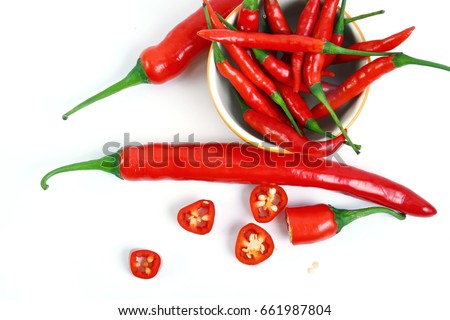Growing chili peppers takes about six months so you should plant them by May, although starting early is recommended so the plant will ripen just in time for summer. Here's a simple step-by-step guide for growing chilies adapted from The Telegraph:
Fill a multicell seed tray with rich organic soil, firm it down and moisten with water. Place a seed in each cell, then lightly cover with soil.
Use a very fine hose to water it gently and then cover with cling film and keep in a warm area of your home. The soil should be moist but not soaked.
After about two to four weeks, when there's a first sign of growth, move to a warm place with plenty of light — but it shouldn't be in direct sunlight. Water the plant from below to strengthen the roots, and check daily to ensure the surface is moist.
When the seedlings sprout a second set of leaves, transplant to 7-centimeter (2.75 inches) pots with moist soil and use liquid tomato for weekly feeding.
Once the plants reach 12 centimeters (4.72 inches), transplant to larger pots, and fill with soil to approximately 1 centimeter (.39 inch) from the top. You should support the plants using a cane when they reach 20 centimeters (7.87 inches).
• When the plants reach 30 centimeters (11.8 inches), pinch out the growing tips right above the fifth set of leaves in order to encourage bushiness. Transplant to another pot if needed and make sure to check the plant daily for aphids.
• When the flowers appear, gently dab a cotton bud into every flower to pollinate.
• Cut off the first chilies while still green to encourage fruiting all season long (July to October). Allow the next fruit to turn red if you want a rounder flavor.
Article Source: Mercola.com
Fill a multicell seed tray with rich organic soil, firm it down and moisten with water. Place a seed in each cell, then lightly cover with soil.
Use a very fine hose to water it gently and then cover with cling film and keep in a warm area of your home. The soil should be moist but not soaked.
After about two to four weeks, when there's a first sign of growth, move to a warm place with plenty of light — but it shouldn't be in direct sunlight. Water the plant from below to strengthen the roots, and check daily to ensure the surface is moist.
When the seedlings sprout a second set of leaves, transplant to 7-centimeter (2.75 inches) pots with moist soil and use liquid tomato for weekly feeding.
Once the plants reach 12 centimeters (4.72 inches), transplant to larger pots, and fill with soil to approximately 1 centimeter (.39 inch) from the top. You should support the plants using a cane when they reach 20 centimeters (7.87 inches).
• When the plants reach 30 centimeters (11.8 inches), pinch out the growing tips right above the fifth set of leaves in order to encourage bushiness. Transplant to another pot if needed and make sure to check the plant daily for aphids.
• When the flowers appear, gently dab a cotton bud into every flower to pollinate.
• Cut off the first chilies while still green to encourage fruiting all season long (July to October). Allow the next fruit to turn red if you want a rounder flavor.
Article Source: Mercola.com



